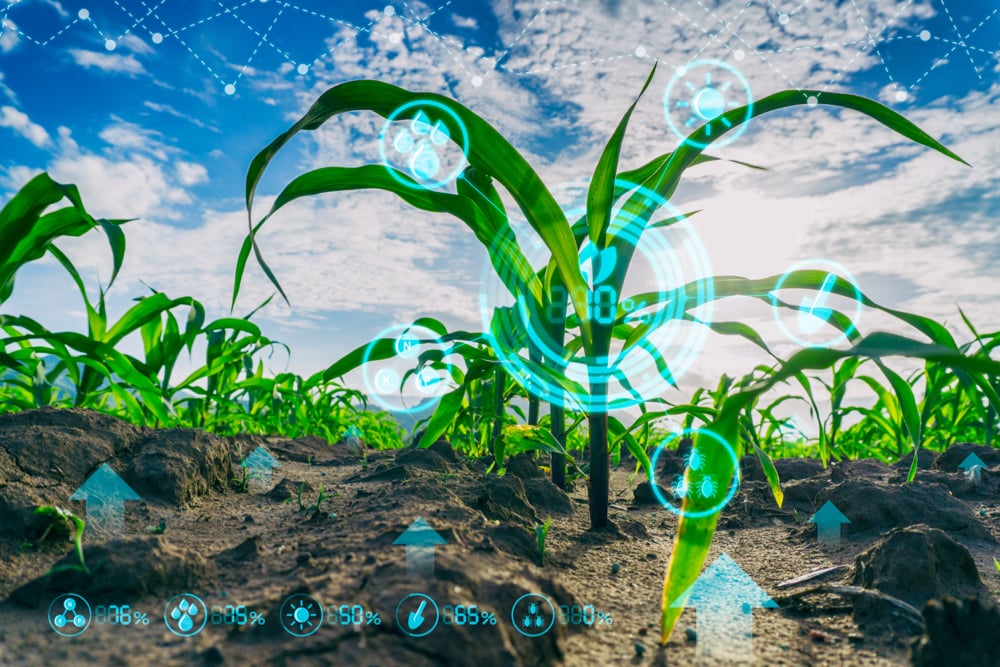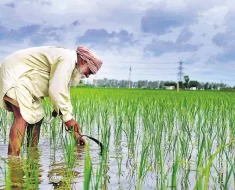Agriculture, the cornerstone of our civilization, perpetually grapples with an array of unforeseeable challenges. Despite farmers dedicating their labor, time, and resources in pursuit of a fruitful harvest, they frequently confront threats like natural calamities, pests, market fluctuations, and economic unpredictability that imperil their livelihoods. In the quest to mitigate these hazards, agricultural insurance companies assume a pivotal role in safeguarding the agricultural community. Within this comprehensive guide, we will delve into the finest agricultural insurance companies, the range of policies they offer, and their integral role in fortifying the financial security of farmers and the agricultural sector as a whole.

Read more.. How to Apply for Agriculture Finance Online in 2023
Section 1: The Significance of Agricultural Insurance
1.1. Risk Mitigation in Agriculture:
The realm of agriculture loan is fraught with uncertainties beyond a farmer’s command. Agricultural insurance extends vital financial support when adverse circumstances impact crop yields or livestock.

Read more.. How to Apply Agriculture Loan and Insurance
1.2. Economic Stability:
Agricultural insurance, by offering stability and financial shelter, actively contributes to maintaining economic equilibrium within the farming community. This contribution plays a pivotal role in sustaining the agricultural sector, a linchpin in global food production.

Read more.. How to Apply for Bike Finance Online in 2023
1.3. Encouraging Investments:
Agricultural insurance serves as a catalyst for farmers to commit to long-term investments. With the assurance of financial protection, farmers become more inclined to invest in cutting-edge equipment, technology, and sustainable farming practices.

Read more.. How to Apply for Bike/ Two Wheeler Loan with Interest Rate
Section 2: Diverse Forms of Agricultural Insurance
2.1. Crop Insurance:
Crop insurance serves to indemnify losses stemming from adverse weather conditions, pests, and diseases. These policies encompass various options, including multiple peril crop insurance (MPCI) and crop-hail insurance.
2.2. Livestock Insurance:
Livestock insurance provides a protective shield for farmers against losses incurred by their animals. This coverage spans accidental death, disease, theft, or injury among livestock.
2.3. Farm Property Insurance:
Farm property insurance shields against the damage or loss of farm structures, equipment, and machinery. It plays a critical role in aiding farmers in the aftermath of property damage due to fire, vandalism, or other perils.
2.4. Agricultural Income Insurance:
Agricultural income insurance steps in to cushion the impact of fluctuations in crop prices and market volatility. It guarantees fair compensation for farmers even when market conditions are unfavorable.
2.5. Liability Insurance:
Liability insurance offers a protective umbrella against legal claims or lawsuits arising from accidents on the farmer’s property. It extends financial support for legal fees and settlements.
Section 3: Critical Considerations in Selecting Agricultural Insurance
3.1. Coverage Options:
An in-depth evaluation of the scope of coverage offered by an insurance provider is essential. This analysis should align with specific requirements, whether they pertain to crop preservation or livestock insurance.
3.2. Financial Stability:
A thorough examination of the financial stability and reputation of the insurance company is prudent. Ratings and reviews can offer valuable insights into the reliability of the insurer.
3.3. Premiums and Deductibles:
Comprehending the cost of premiums and associated deductibles is vital for informed decision-making. Comparing prices facilitates the selection of a plan in harmony with one’s budget.
3.4. Claim Settlement Process:
The efficiency and transparency of the claim settlement process demand scrutiny. An efficient and responsive claims system is crucial during times of need.
3.5. Customization Options:
Opting for insurers that furnish customizable policies tailored to meet specific farming prerequisites is prudent. Flexibility ensures that individual risks receive adequate coverage.
Section 4: Premier Agricultural Insurance Companies
4.1. American Agricultural Insurance Company (AAIC):
AAIC stands as a prominent provider of crop insurance and offers a diverse array of coverage options. Renowned for its financial stability and streamlined claims processing.
4.2. Rain and Hail Insurance:
Rain and Hail Insurance specialize in crop-hail insurance, known for providing comprehensive protection. Their offerings encompass coverage for both crop losses and hail damage.
4.3. Nationwide Agribusiness:
Nationwide Agribusiness offers a wide spectrum of farm insurance products, fostering trust through its unwavering commitment to the agricultural community.
4.4. Farmers Mutual Hail (FMH) Insurance:
Serving the agricultural sector for over a century, FMH extends multi-peril crop insurance, hail insurance, and more.
4.5. Chubb Agribusiness:
Chubb Agribusiness presents comprehensive insurance solutions tailored to farms and ranches. Their coverage extends to property, liability, and other agribusiness necessities.
4.6. Crop Risk Services (CRS):
CRS is esteemed for delivering crop insurance and risk management services, with a focus on personalized solutions for farmers.
Section 5: Advantages of Agricultural Insurance
5.1. Financial Security:
Agricultural insurance confers peace of mind and financial security upon farmers. It ensures the capacity to recuperate from losses and continue farming operations.
5.2. Encouraging Investment:
With insurance coverage in place, farmers are more inclined to embrace modern farming techniques and technologies, culminating in enhanced productivity and sustainability.
5.3. Fostering Sustainable Agriculture:
Insurance acts as a steadfast supporter of sustainable farming practices by mitigating risks, critical for the long-term production of food and environmental preservation.
5.4. Economic Resilience:
Agricultural insurance actively bolsters the resilience of rural economies, preserving the income of farmers and the livelihoods of numerous rural communities.
Section 6: Challenges in Agricultural Insurance
6.1. Climate Change:
The increasingly erratic weather patterns present formidable challenges in assessing and managing agricultural risks. Adaptation to these changes is imperative for insurance companies.
6.2. Data Collection:
The collection of precise data concerning crop yields, weather patterns, and other variables is a cornerstone of risk assessment. In some regions, accessing reliable data can prove to be a hurdle.
6.3. Affordability:
High insurance premiums can pose a significant barrier for small-scale farmers, necessitating the exploration of strategies to make insurance more accessible and affordable.
Section 7: Conclusion and Future Prospects
In summation, agricultural insurance stands as a linchpin in sustaining the agricultural sector and bolstering farmers on a global scale. The foremost agricultural insurance providers offer a gamut of policies encompassing crop, livestock, and property, thereby assuring financial stability and security. In a continually evolving agricultural landscape, insurance remains an indispensable tool in mitigating risks and promoting sustainable farming practices. Effective solutions demand the collaboration of policymakers, insurers, and farmers in addressing the challenges to secure the future of agriculture finance . Amidst the backdrop of climate change and economic uncertainties, agricultural insurance remains a beacon of hope for the farming community and the global food supply chain.






